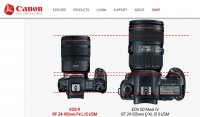Aussie shooter
https://brettguyphotography.picfair.com/
If the specs for the 1dx3 are on point then there is little doubt canon now has the ability to make whatever mirrorless it wants. It's just a matter of when they choose to do it. I guess from.a business perspective that is a tricky issue. It will be a balancing act to stop them wasting too much in development costs and frustrating impatient customers. But I think Sony is probably looking over their shoulders. It is abundantly clear that canon has the best video capabilities if they want to use them and they are not lagging in other areas either(especially if they have managed a slight improvement in their AF algorithms).
Upvote
0

